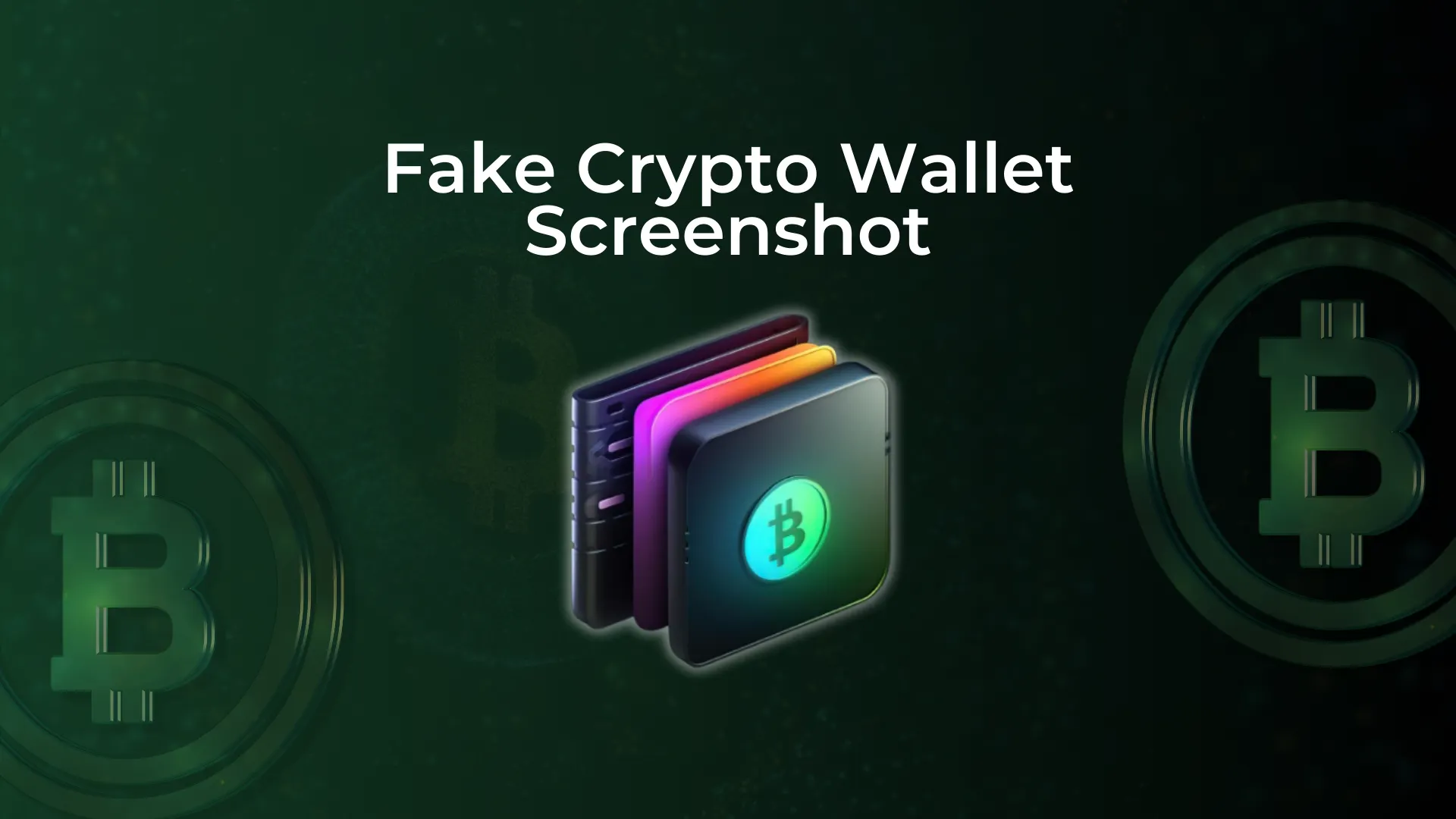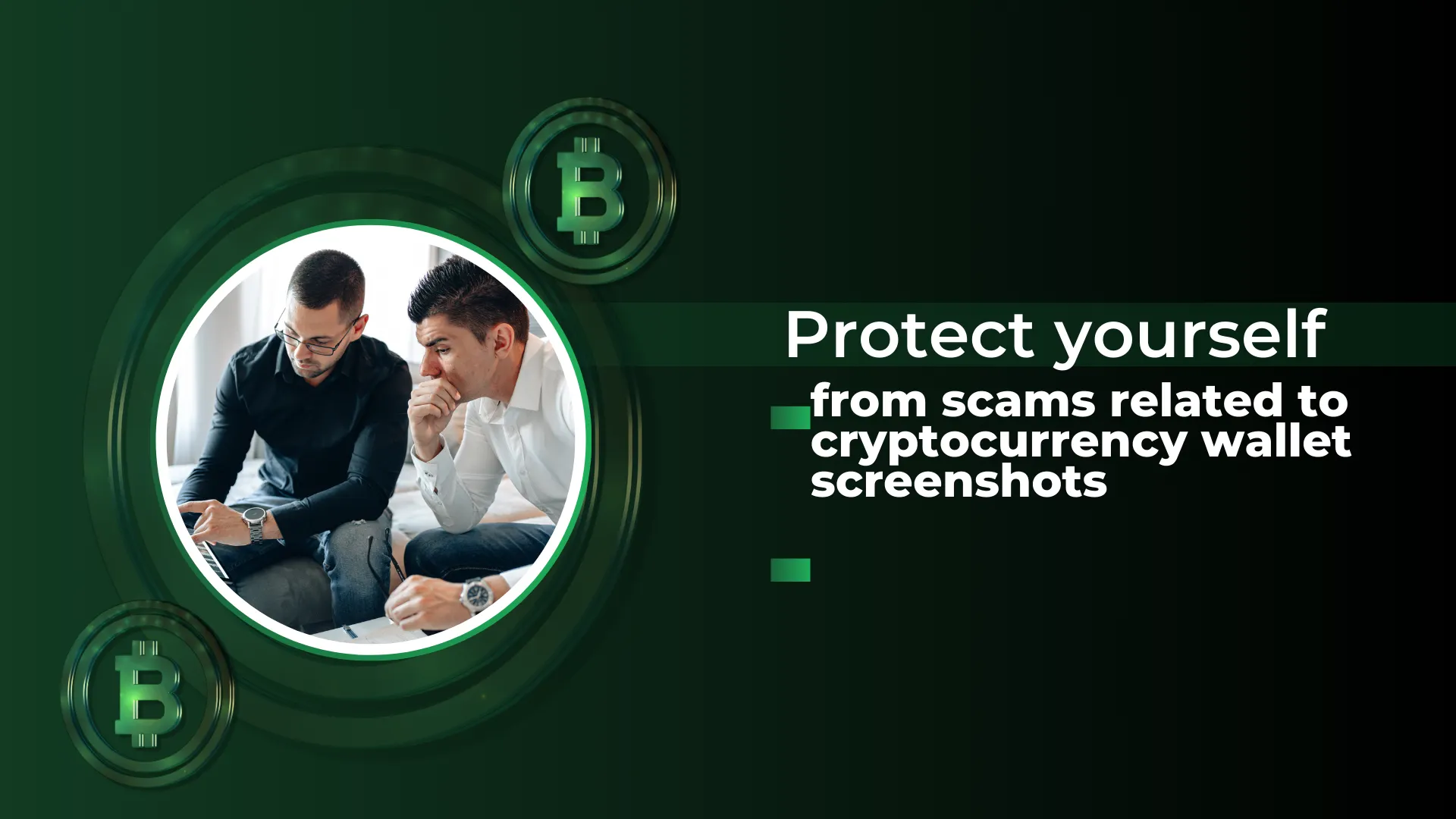In the dynamic realm of cryptocurrencies, visual proof like wallet screenshots is often used to verify ownership, showcase transaction histories, or flaunt investment gains. Unfortunately, this practice has also opened a door for scammers who craft convincing fake crypto wallet screenshots to mislead and defraud individuals. By understanding the tactics employed by these fraudsters and recognizing the red flags, you can protect yourself and your investments.
Contents
Key Indicators of a Fake Crypto Wallet Screenshot
Fake crypto wallet screenshots are increasingly being used by scammers to deceive and exploit unsuspecting individuals. These fraudulent images often appear convincing at first glance, but they frequently contain subtle inconsistencies and errors that can expose their true nature. By understanding the common characteristics of a fake crypto wallet screenshot, you can better protect yourself from falling victim to such scams. Below are key indicators to help you identify a fake crypto wallet screenshot.

1. Unrealistic Balances
One of the most glaring signs of a fake crypto wallet screenshot is an unrealistic balance. Scammers often use inflated figures to lure victims into believing they can achieve similar results by investing in their schemes. If the balance seems too good to be true, it probably is. For instance, screenshots showing millions of dollars in a wallet, especially when shared by unknown individuals or groups, should raise immediate suspicion.
2. Suspicious Transaction History
Transaction history can reveal a lot about the authenticity of a wallet screenshot. Fake screenshots often display:
- Numerous Small Transactions: Designed to simulate activity but lack logical context.
- Unexpected Large Deposits: These may appear without any explanation, such as windfalls from obscure sources.
- Identical Timestamps: Real transactions on a blockchain occur at varying intervals. Identical or highly improbable timestamps are a major red flag.
3. Lack of Context
Authentic wallet screenshots usually include clear indicators of the platform or wallet used. Fake screenshots might:
- Omit platform-specific branding.
- Use generic wallet interfaces that are easy to replicate or edit.
- Exclude app version details, which are typically visible on genuine screenshots.
4. Poor Image Quality
While not always definitive, poor image quality is often a sign of manipulation. Blurry, pixelated, or distorted screenshots may indicate the image has been altered or hastily created. Legitimate platforms generally produce clear and professional interfaces, making poor quality a noticeable anomaly.
5. Missing Crucial Details
Legitimate wallet screenshots typically include essential details like:
- Transaction IDs: Unique identifiers for blockchain transactions.
- Wallet Addresses: Public addresses involved in transactions.
- Timestamps: Showing when transactions occurred. Their absence is a significant red flag, as these details are critical for verifying any claims.
How to Verify the Authenticity of a Crypto Wallet Screenshot?
Cross-Reference with Public Blockchain Explorers
Public blockchain explorers, such as Etherscan or Blockstream Explorer, are invaluable tools for verifying transactions. You can:
- Input wallet addresses or transaction IDs from the screenshot.
- Check if the transaction details match the claims. If the data doesn’t align, it’s likely a scam.
Check with the Source Directly
If someone shares a wallet screenshot to prove their claims, ask for direct verification. Request additional proof, such as:
- Real-Time Demonstrations: Seeing the wallet in action via screen sharing.
- Live Address Verification: Comparing details directly with a blockchain explorer.
Be Skeptical of Unverified Claims
Always treat unverified claims with skepticism. Scammers rely on their victims’ trust and haste to exploit them. Never act on a screenshot alone without verifying its authenticity.

Cryptocurrency scams have become increasingly sophisticated, with fraudsters leveraging fake crypto wallet screenshots to deceive unsuspecting victims. These fake crypto wallet screenshots often prey on the lack of awareness and eagerness for quick gains in the crypto community. To safeguard your assets, it’s crucial to stay informed and take proactive measures. The following guidelines will help you identify red flags and adopt best practices to protect yourself from falling victim to such schemes.
Conduct Thorough Research
Before investing in any cryptocurrency or project, conduct extensive research on its:
- Background: Check the project’s website, whitepaper, and mission.
- Team: Verify the credentials and experience of the team members.
- Technology: Understand the core technology and its real-world applications.
Use Reputable Exchanges and Wallets
Stick to well-known and secure platforms when managing your cryptocurrencies. Platforms with strong reputations are less likely to be associated with scams and often provide better security measures.
Enable Two-Factor Authentication (2FA)
Two-factor authentication adds an extra layer of security to your accounts. Even if someone obtains your login credentials, they would need access to the second authentication factor to gain entry.
Be Wary of Unverified Sources
Avoid acting on information from:
- Unknown Individuals or Groups: Especially those offering unsolicited advice or opportunities.
- Social Media Posts: Scammers frequently use platforms like Twitter, Telegram, and Discord to spread false claims.
- Promises of Quick Gains: Offers guaranteeing high returns with little effort are almost always scams.
Why Do Scammers Use Fake Crypto Wallet Screenshots?
The appeal of fake crypto wallet screenshots lies in their psychological impact. Scammers leverage them to:
- Build Credibility: By showing large balances or successful transactions, they aim to appear trustworthy.
- Trigger FOMO (Fear of Missing Out): Seeing purported success stories can pressure individuals into making impulsive decisions.
- Disguise Scams: Screenshots can serve as a distraction or proof for fraudulent investment schemes.
Real-World Examples of Fake Crypto Wallet Screenshots
- Example 1: Ponzi Schemes
Many Ponzi schemes use doctored wallet screenshots to convince investors that their funds are growing exponentially. Victims, in turn, share these screenshots to recruit others, perpetuating the scam.
- Example 2: Phishing Scams
Scammers might use fake wallet screenshots to pose as legitimate entities. For instance, they could claim to be from a well-known exchange, requesting deposits to a specific address under the guise of “updating” account details.
Fake crypto wallet screenshots are a tool in the scammer’s arsenal, designed to mislead and manipulate. Recognizing the signs of fake screenshots and adopting verification practices can significantly reduce your risk of falling victim to such schemes. Always remain vigilant, conduct thorough research, and trust your instincts when something feels off.
In the ever-evolving world of cryptocurrencies, skepticism and diligence are your best defenses against scams. By staying informed and cautious, you can navigate this exciting financial frontier safely.
Disclaimer: This article is for informational purposes only and does not constitute financial or investment advice. Always conduct thorough research and consult with qualified professionals before making any investment decisions.
By equipping yourself with the knowledge to spot fake crypto wallet screenshots, you’re not just protecting your assets; you’re contributing to a safer and more trustworthy cryptocurrency ecosystem. For more insights, visit Crypto Sniper Bot and start making informed investment choices today!
